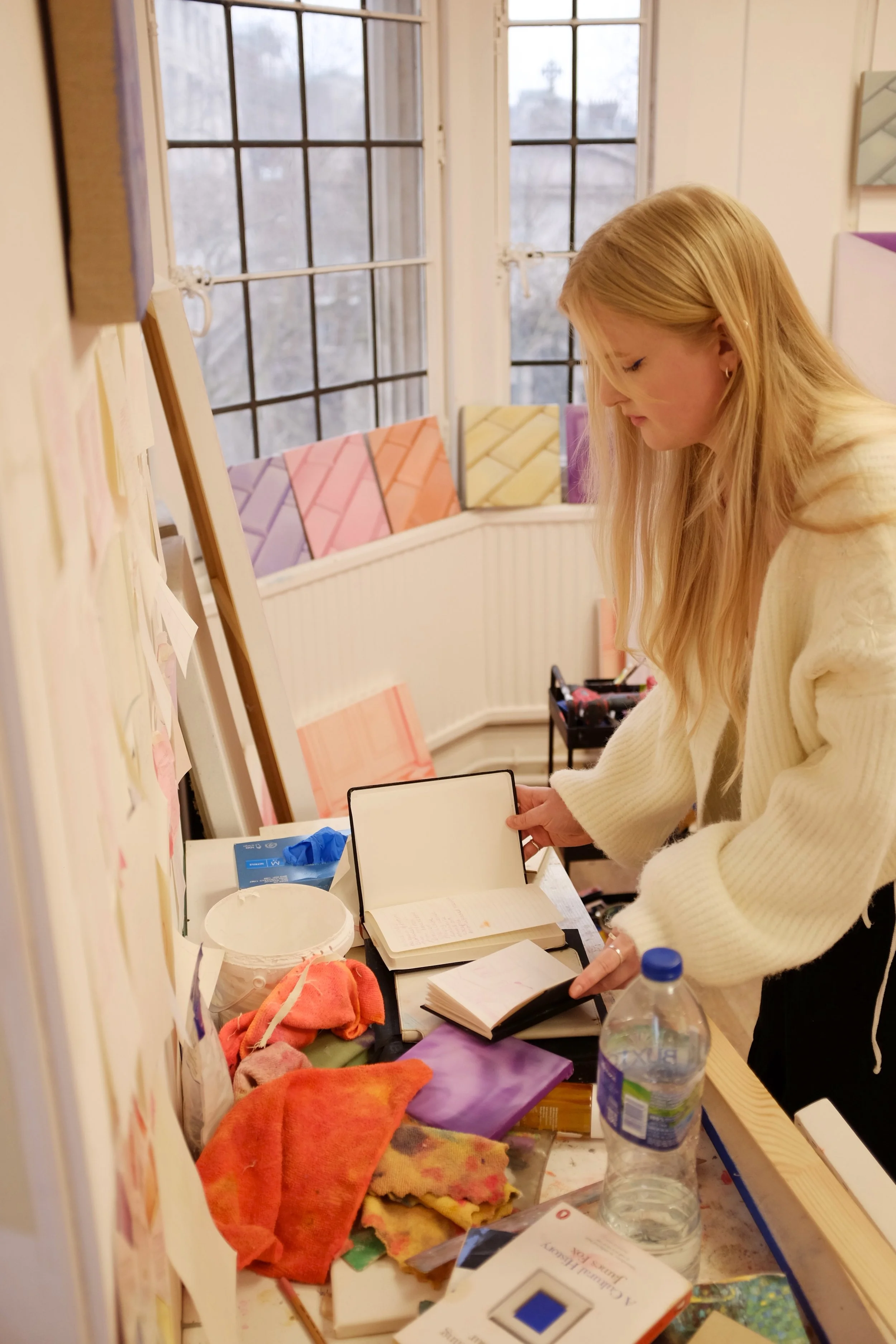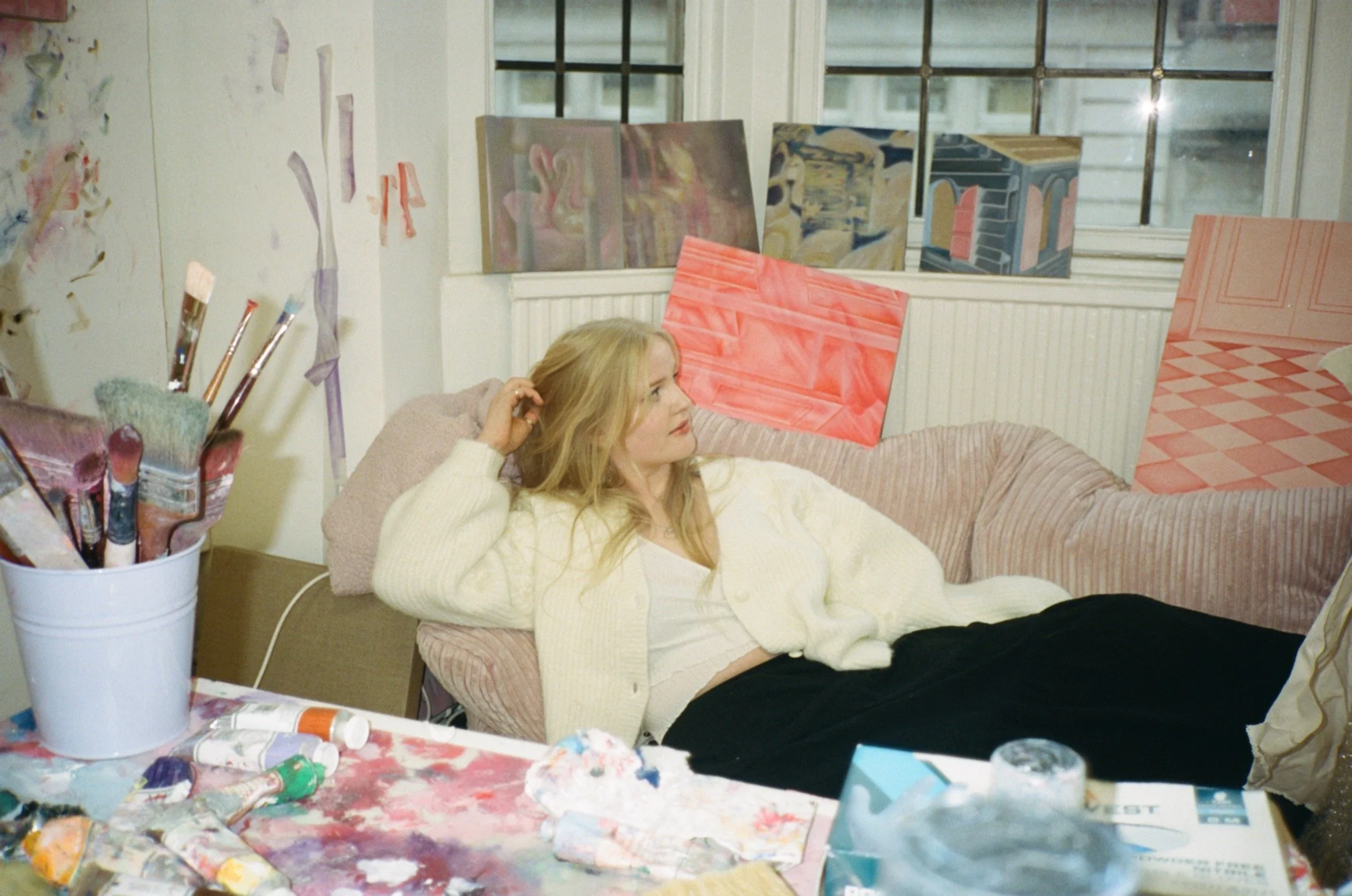The notion of space is central to the body of work presented for your show, Portals. How do you interpret this concept within your practice, and what does it represent within the context of your visual narrative?
“I use lived-in existing spaces for reference, however, I toy with it and shapeshift it slightly to meld into the canvas. I remove certain elements such as light switches, doorknobs or corners of floors at times, to give the just out of reach feel space can have within dreams – as the paintings are not intended to be replicas but phantoms of space that is a mixture of memory, dream and photos. Like ghosts and dreams, its imagery that while may exist in one reality, may not in another. Shifting the viewer out of one space and into another when viewed without conventional boundaries. For larger works, I measure the canvas from the point of view where I’m stood, so the perspective is as immersive as possible.
The paintings depict spaces that I interpret from my lived-in environments. After leaving home, I began filling sketchbooks with rooms, stairs, and doors I pass through, alongside recurring spaces from my dreams. The passages and portals develop from memory, and the spaces shape-shift from my house to the gallery, translating three-dimensional space onto a two-dimensional surface. The space becomes a different version, much like how memories change each time they are recalled. Home is created through the relationship between the living body and a material world, sculpted by time and memory, encompassing both tangible and intangible aspects. As Gaston Bachelard writes, ‘Inhabited space transcends geometrical space."




